Family: Marriage
Legal-Religious Status of the Suspected Adulteress (Sotah)
Legal-Religious Status of the Virgin
Virginity has long remained a significant feature of womanhood in Judaism. Many foundational Jewish texts detail the specifics of virginity, explaining the requirements of virginity and to what extent these requirements can be expanded.
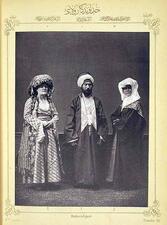
Levant: Women in the Jewish Communities after the Ottoman Conquest of 1517
Following their expulsion from the Iberian Peninsula in 1492, many Jews settled in Palestine, Egypt, and Syria – regions which fell under Ottoman Control in 1517. Girls in the Levant were married at young ages, polygamy was common, and obtaining a get was very difficult. Nevertheless, many Jewish women worked outside the home and kept their earnings.
Mahalath, daughter of Ishmael: Midrash and Aggadah
Midrash and Aggadah present both a positive and a negative take on the marriage of Esau, son of Isaac and Rebekah, to Mahalath, daughter of Ishmael.
Maimonides
Maimonides, referred to by the acronym Rambam, was a medieval Sephardic Jewish sage who studied medicine and practiced as a physician throughout his lifetime. His legal and philosophical writings made him one of the greatest and most widely read medieval Jewish philosophers.
Mariamme I The Hasmonean
Mariamme, granddaughter of the last Hasmonean rulers, was the wife of King Herod of the new dynasty. After bearing him five children, she was executed by the king in 27 B.C.E.
Marriage in Halakhic Judaism
Martha, daughter of Boethus
One of the richest women in Jerusalem during her time, Martha, daughter of Beothus, used her wealth to change the laws of marital status to marry Joshua ben Gamla, a High Priest.
Medieval Ashkenaz (1096-1348)
The Jews of medieval Ashkenaz are known for their prolific rabbis and for the Ashkenazic customs that became characteristic of many European Jewish communities. During the High Middle Ages, the women in these communities had many important roles women within the family and in the communal, economic, and religious life.
Merab, daughter of Saul: Midrash and Aggadah
Merab, daughter of Saul, was meant to marry David, but ended up being given in matrimony to Adriel the Metholathite. Rabbis in the Midrash and Aggadah discuss two different versions of events: one in which Merab marries David, and one where she marries Adriel.
Merab: Bible
Merab, one of the daughters of King Saul, is originally offered in marriage to David, whom Saul hopes to have killed. However, Saul’s plan fails, and Merab marries another man. The story of Saul’s attempt to arrange Merab’s marriage shows the social structures between fathers and daughters among the ancient Israelites.

Michal, daughter of Saul: Midrash and Aggadah
The Midrash and Aggadah provide insight into the marriage of Michal, daughter of Saul, to David, to whom she was loyal over her father, Saul. Michal was later punished for publicly disrespecting David.
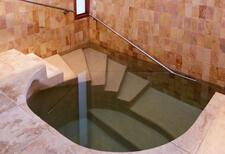
Mikveh
The mikveh is a ritual bath prescribed by ancient Jewish law for the rite of purification. It had particular significance for Jewish women, who were required to immerse themselves in the mikveh following their menstrual periods or after childbirth in order to become ritually pure and permitted to resume sexual activity. The practice has been jettisoned by many Jews but continues to be observed today, not only in Orthodox communities but also by feminists, queer Jews, and others who have reinterpreted the ritual.

Cheryl Moch
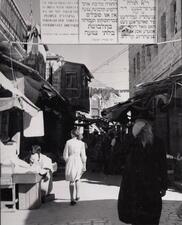
Modesty and Sexuality in Halakhic Literature
Though it is not mentioned in the Bible, modesty (zeni'ut) has become a significant part of modern halakhah, especially in the realm of sexuality. For women, sexual modesty means covering up their bodies. For both men and women, modesty also entails certain behavioral rules. These modesty rules ensure that sex happens in a way that is deemed proper, in the right time and place.

Morocco: Nineteenth and Twentieth Centuries
The Moroccan Jewish community was the largest Jewish community in North Africa during the nineteenth and twentieth centuries. The status of Moroccan Jewish women was affected by a variety of factors, including a patriarchal order and social changes brought about by economic development, urbanization, and contact with European countries.
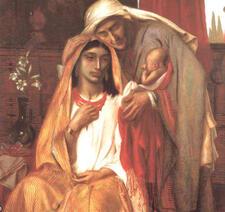
Naomi: Bible
Naomi is featured prominently in the Hebrew Bible and is portrayed as a woman who both challenges and conforms to patriarchal expectations. Analyses of Naomi from a modern feminist lens include varied interpretations of her actions, but she nevertheless dominates the stories in the Book of Ruth and effectively controls the situations of which she is a part.
Nature of Women
Jewish Women in New Zealand
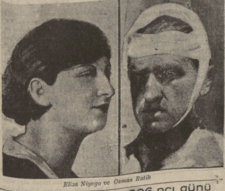
Elza Niego
In 1927, Elza Niego, a young Jewish woman was stabbed to death by an older Turkish man whose romantic advances she had repeatedly refused. Her murder sparked an intense emotional reaction from Jews, which the Turkish press found unacceptable, leading to antisemitic publications and outbursts, including the arrest of nine Jewish leaders.
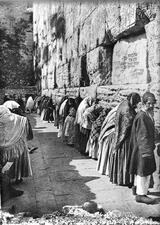
Old Yishuv: Palestine at the End of the Ottoman Period
Rabbi Ben-Zion Meir Hai Ouziel
Rabbi Ben-Zion Hai Ouziel was the Sephardic chief rabbi of Israel. Ouziel believed women could vote and be elected, serve as judges, use birth control for health reasons, and inherit property. He proposed a marriage formula that would prevent women from becoming agunot (“chained”).
Poland: Interwar
A minority habitually ignored by scholars, Polish-Jewish women played important roles in the changing cultural and political framework of the interwar years.
Post-Biblical and Rabbinic Women
IIn antiquity, the treatment of women drew from patriarchal biblical traditions. Despite a few notable exceptions, women had minimal legal rights but were active participants in alternative Jewish sects and could hold office. As rabbinic material was codified, control over women increased, although the literature was not exclusively restrictive towards women.


